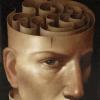Mostly just doing a cut and past of this from Neuroscience news, no time to fully digest the full text. Full text is available at: http://www.cell.com/...09(15)00419-1.
I will be looking into NeuroD1 and NEUROGENIN/2, definitively a very promising however still only in vetro and in mouse models.
_________________________________
Summary
We have recently demonstrated that reactive glial cells can be directly reprogrammed into functional neurons by a single neural transcription factor, NeuroD1. Here we report that a combination of small molecules can also reprogram human astrocytes in culture into fully functional neurons. We demonstrate that sequential exposure of human astrocytes to a cocktail of nine small molecules that inhibit glial but activate neuronal signaling pathways can successfully reprogram astrocytes into neurons in 8-10 days. This chemical reprogramming is mediated through epigenetic regulation and involves transcriptional activation of NEUROD1 and NEUROGENIN2. The human astrocyte-converted neurons can survive for >5 months in culture and form functional synaptic networks with synchronous burst activities. The chemically reprogrammed human neurons can also survive for >1 month in the mouse brain in vivo and integrate into local circuits. Our study opens a new avenue using chemical compounds to reprogram reactive glial cells into functional neurons.
“Small Molecules Efficiently Reprogram Human Astroglial Cells into Functional Neurons” by Lei Zhang, Jiu-Chao Yin, Hana Yeh, Ning-Xin Ma, Grace Lee, Xiangyun Amy Chen, Yanming Wang, Li Lin, Li Chen, Peng Jin, Gang-Yi Wu, and Gong Chen in Cell Stem Cell. Published online October 15 2015 doi:10.1016/j.stem.2015.09.012



















































